This movie shows how the Sun's magnetic field gets tangled up as the Sun spins around.
Animation courtesy of SOHO (ESA & NASA).
Magnetic Field Lines Get Tangled as Sun Spins
Different parts of the Sun spin around at different speeds. The Sun's equator spins fastest. The poles spin more slowly. This makes the Sun's magnetic field get all tangled up. Loops in the tangled magnetic field poke through the Sun's surface sometimes. When they do, they make sunspots.
There are lots of sunspots about every 11 years. That's when the magnetic field is really tangled up. When the magnetic field isn't tangled, there aren't many sunspots. This cycle goes back and forth every 11 year. Scientists call it the sunspot cycle.
Right-click (Windows) or Option-click (Mac) on any of the following links to download a copy of this video in QuickTime or MPEG formats: large (3.7 MB) QuickTime, small (919 KB) QuickTime, large (2 MB) MPEG, or small (714 KB) MPEG.
You might also be interested in:
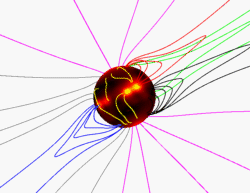
Text for this level has not been written yet. Please see the "Intermediate" text for this page if you want to learn about this topic. To get to the "Intermediate" text, click on the blue "Intermediate"
...more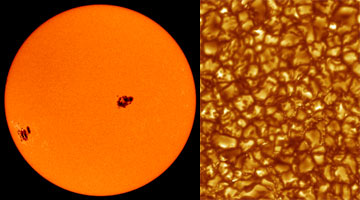
Most of the energy we receive from the Sun is the visible (white) light emitted from the photosphere. The photosphere is one of the coolest regions of the Sun (6000 K), so only a small fraction (0.1%)
...more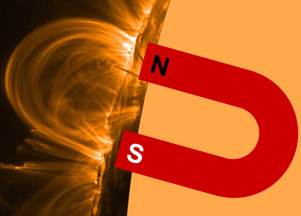
You probably have magnets on your refrigerator holding up some of your artwork or a photograph of a friend or family. Did you know that it is magnetic fields (which all magnets have) that make sunspots
...more
The force of magnetism causes material to point along the direction the magnetic force points. Here's another picture of how this works. This picture shows where the magnetic poles of the Earth are to
...more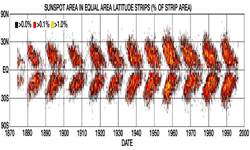
Throughout the solar_cycle, the latitude of sunspot occurrence varies with an interesting pattern. The plot on the left shows the latitude of sunspot occurence versus time (in years). Sunspots are typically
...more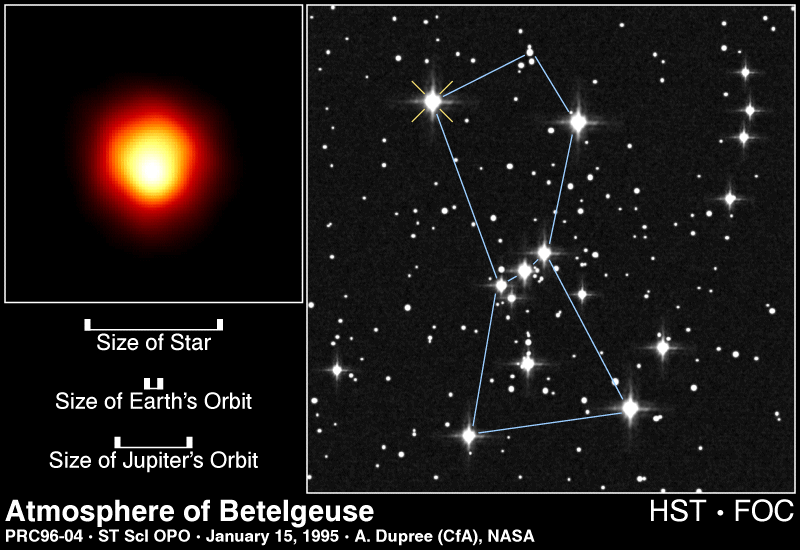
When the temperature in the core of a star is really hot (100 million degrees Kelvin!) fusion of Helium into Carbon happens. Oxygen is also formed when the temperature is this high. When it gets even hotter
...more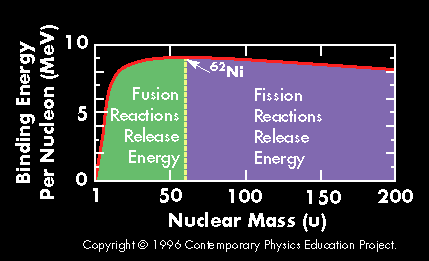
A plot of the binding energy per nucleon vs. atomic mass shows a peak atomic number 56 (Iron). Elements with atomic mass less then 56 release energy if formed as a result of a fusion reaction. Above this
...more














